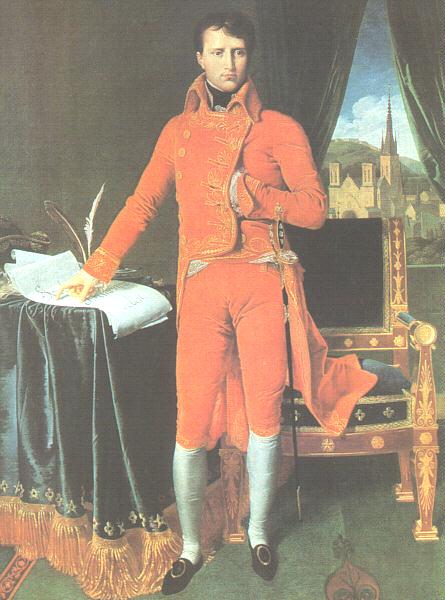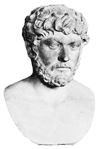^
Deaths which occurred on a February
19:
2004 One Iraqi, and two US soldiers of Task Force All-American, by a
roadside bomb in Khalidiyah, Iraq.
2003 Nasser Abu Safiyeh, 32, shot by Israeli troops in
Nablus, West Bank, while he is walking home from prayers, with his father,
93.
2003 All 302 aboard an Iranian military Ilyushin-76 cargo
plane used to carry passengers, which crashes at 17:40 (14:10 UT) in mountains
near Shahdad, 35 km southeast of its destination, Kerman, Iran. 284 of the
dead are Revolutionary Guards of the Sarallah brigade, returning from a
mission in Zahedan; the other 18 are the aircrew.
2002 Three men, shot by a fourth who then commits suicide,
in Munich, Germany A gunman killed three people in a rampage that started
when he killed his former boss and a foreman at the home furnishings company
that had recently fired him. Afterward, he traveled 20 km to a Munich suburb,
entered a high school and shot the headmaster after he was unable to find
the teacher he was after. He shot another teacher in the face and set off
homemade bombs before committing suicide.
2002 Six
Israelis, shot by Palestinian attackers, in a building close to
an Israeli roadblock near the village of Ein Arik, West Bank, at about 21:00.
2002 Iyad Abu Safiyeh, 22, and Mohamed Hamdan, 25, when
an Israeli helicopter gunship fired three missiles at a civilian building
in the Jabalya refugee camp, Gaza Strip. Ten other Palestinians are injured,
mostly children going home from school.
2002 Mariam Bahabsa,
40, her daughter Mona, 14, and Abdul Wahab Najar, 19, Palestinians,
early in the day when an Israeli tank shell hit their homes, in Khan Yunis,
Gaza Strip.
2002 Mohammed Al Kasser, 21, shot by
Israeli troops making an incursion into Deir Al Balah, Gaza Strip.
^
2001 Tin
Oo, Thein Nyunt, and Lun Maung, Myanmar military junta
officials, in helicopter crash.
The
MI-17 Russian-made army helicopter, carrying about a dozen officials,
went down due to engine trouble in southeastern Myanmar. Among those
killed was Lt. Gen. Tin Oo, 67, Secretary 2 in the ruling junta (State
Peace and Development Council). The others killed were Col. Thein
Nyunt, the minister of progress of border areas and national races
and development affairs, and Brig. Gen. Lun Maung, the minister in
the prime minister's office
The
aircraft crashed in Salween river near Pa-an where Tin Oo and his
party had gone to inspect a new bridge. The area is about 160 km southeast
of Yangon, the capital. Tin Oo, 67,
was the chief of staff of the army and the fourth-ranking general
in the regime that came to power in a bloodless coup in 1988.
Tin Oo had survived at least one assassination
attempt in April 1997 when a parcel bomb airmailed from Japan exploded
in his house, killing his 32-year-old daughter, Cho Lei Oo, a university
lecturer. Tin Oo was in the house but escaped unhurt. The government
blamed anti-government dissidents, but rebel groups denied responsibility
and said the bombing was the result of a power struggle in the ruling
junta.
On Christmas Day in 1996,
two bombs tore through a Yangon pagoda that Tin Oo had visited hours
earlier. Five people were killed but it was not clear if Tin Oo was
the target.
Born on May 13,
1933, Tin Oo was commissioned as army officer after graduating from
the military Officers Training School in 1955. After serving in various
capacities Tin Oo became the army chief-of-staff in 1985 with the
rank of a colonel. He was promoted to brigadier general in September
1988 and to major general in March 1990. In September 1988, Tin Oo
was appointed Secretary 2. A veteran of campaigns against ethnic and
communist insurgents, Lt. Gen. Tin Oo had often threatened in public
to "annihilate opponents of the regime. But he rarely spoke publicly
of politics and was a popular commander with the troops.
Myanmar has been ruled by the military since 1962, and the current
junta came to power in 1988 after a crackdown on a pro-democracy movement.
The regime keeps a tight grip on the media in Myanmar, and the public
usually knows very little about the government and its activities.
The junta has faced intense Western criticism for stifling the opposition,
which is led by Aung San Suu Kyi. She won the 1991 Nobel Peace Prize
for her efforts to bring democracy to Myanmar. |
2001 Mohammed Madiny, Hamas militant, preventively murdered
by Israeli secret services. For collaborating in this murder, Palestinian
Munthir Hafnaweh would be sentenced to death by a Nablus Palestinian security
court on 09 August 2001.
2001 Charles Trenet, poeta,
cantante y compositor francés.
2000: 17 muertos en el mayor
motín de la historia carcelaria de Brasil, organizado por la agrupación
Primer Comando de la Ciudad (PCC), responsable del narcotráfico en las cárceles
brasileñas.
2000 Friedrich Stowasser “Hundertwasser”,
Austrian painter born on 15 December 1928 — LINKS
— Venice
(1963) — Good
Morning City — Venezia
(1968) — The
30 Day Fax Picture
1997 Deng Xiaoping, the last
of China's major Communist revolutionaries.
1997 The principal
and a student of the Bethel, Alaska, high school, by shotgun of
Evan Ramsey, 16, who would be sentenced to two 99-year terms in prison.
Two other students were wounded.
1990 Eight demonstrators
for multi party system in Nepal, killed by police.
1990 Neugebauer,
mathematician.
1988René Char, poeta francés.
1985 Los 148 ocupantes de un Boeing 727 que se estrela
en la ladera noroeste del monte Oiz (Vizcaya) al prepararse a aterrizar
en el aeropuerto de Sondica.
1952 Knut Pedersen Hamsun,
escritor noruego.
1951 André[-Paul-Guillaume] Gide,
81, French writer (Nobel 1947)
^
1945 More
than 550 US Marines, and some Japanese, in first day of battle of
Iwo Jima.
After
three days of heavy naval and aerial bombardment, the first wave of
US Marines storm onto the tiny volcanic island of Iwo Jima, a Pacific
island located in bomber-range of the Japanese home islands. The Japanese
garrison on the island numbered only 22'000 men, but their commander,
General Tadamichi Kuribayashi, who had been expecting an Allied invasion
for eight months, had used the time to construct an intricate and
deadly system of underground tunnels, fortifications, and artillery
that withstood the initial Allied bombardment. By the evening of the
first day, the 30'000 US Marines commanded by General Holland Smith
had managed to establish a beachhead. Over the next few days, the
Marines advanced inch by inch under heavy fire from entrenched Japanese
artillery and suffered suicidal charges from the Japanese infantry.
While the Japanese kamikaze flyers slammed into the Allied naval fleet
around Iwo Jima, the Marines on the island continued their bloody
northern advance across the island, responding to Kuribayashi’s lethal
defenses with remarkable endurance. On 23 February 1945, the Twenty-Eighth
Marine Division took the crest of Mount Suribachi, the island’s only
peak and most strategic position. The image of the soldiers raising
the American flag on this peak, taken by photographer Joseph Rosenthal,
is one of the most famous photographs of World War II. By 03 March,
US forces controlled all three airfields on the island, and by March
26, the last Japanese defenders on Iwo Jima had been wiped out. Six
thousand Americans died taking Iwo Jima and 17'200 were wounded. Almost
all of the 22'000 Japanese defenders perished.
Operation
Detachment, the US Marines' invasion of Iwo Jima, starts. Iwo Jima
was a barren Pacific island guarded by Japanese artillery, but it
a good place where to build airfields to launch bombing raids against
Japan, only 1060 km away. The US began applying pressure to the Japanese
defense of the island in February 1944, when B-24 and B-25 bombers
raided the island for 74 days. It was the longest pre-invasion bombardment
of the war, necessary because of the extent to which the Japanese
— 21'000 strong — fortified the island, above and below ground, including
a network of caves. Underwater demolition teams ("frogmen") were dispatched
by the Americans just before the actual invasion. When the Japanese
fired on the frogmen, they gave away many of their "secret" gun positions.
The amphibious landings of Marines
begin in the morning of 19 February as the secretary of the navy,
James Forrestal, accompanied by journalists, surveys the scene from
a command ship offshore. As the Marines make their way onto the island,
seven Japanese battalions open fire and obliterate them. By evening,
more than 550 Marines are dead and more than 1800 are wounded. The
capture of Mount Suribachi, the highest point of the island and bastion
of the Japanese defense, took four more days and many more casualties.
When the US flag was finally raised on Iwo Jima, the memorable image
was captured in a famous photograph that later won the Pulitzer Prize. |
1945 900 Japanese soldiers reportedly killed by crocodiles
in 2 days. The crocodiles did that of their own accord, without any special
training or incentive from the Allies. |
 1803
Les Suisses adoptent l'Acte de médiation
1803
Les Suisses adoptent l'Acte de médiation 1799
1799
 1906
Battle Creek Toasted Corn Flake Company is incorporated by W. K.
Kellogg and Charles D. Bolin, Battle Creek MI
1906
Battle Creek Toasted Corn Flake Company is incorporated by W. K.
Kellogg and Charles D. Bolin, Battle Creek MI